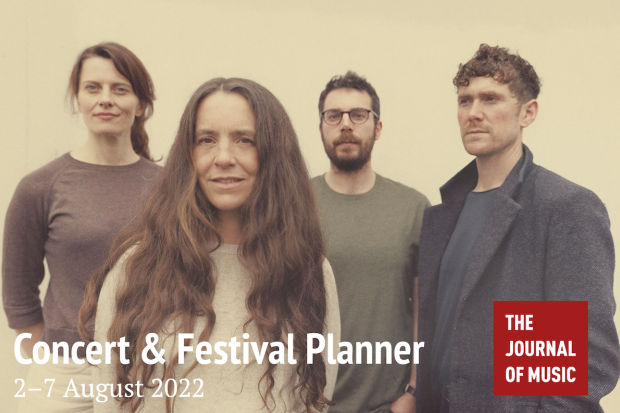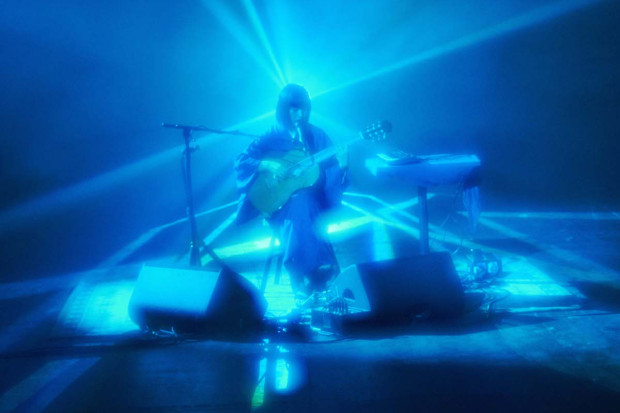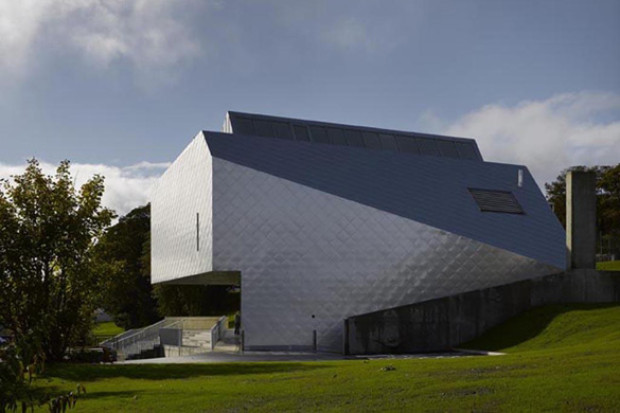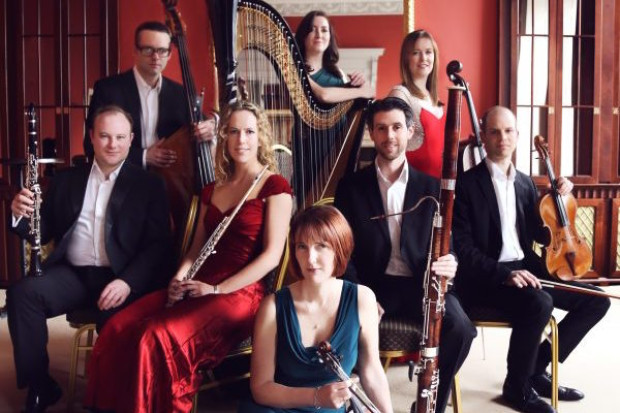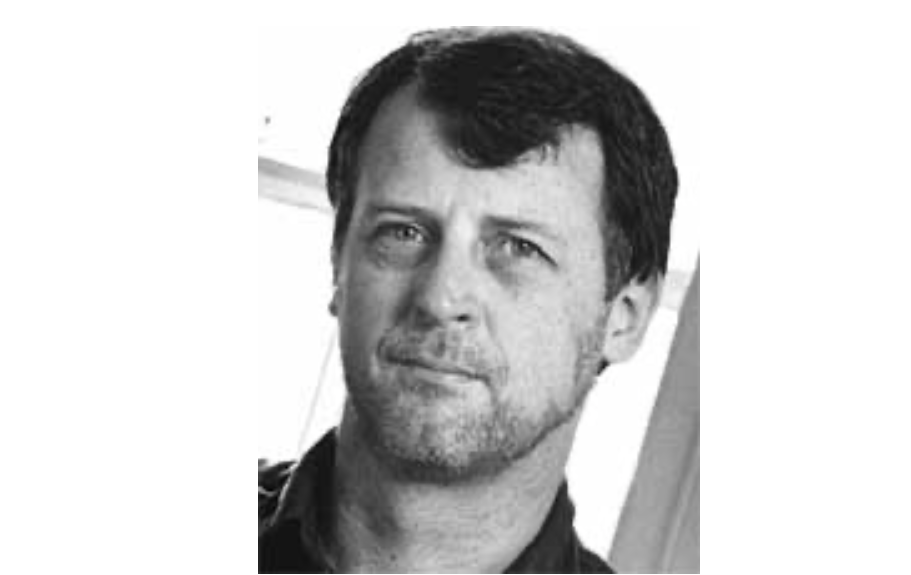
Contemporary Music?
A couple of years ago I went to a concert by the American saxophonist Steve Coleman at the Mermaid Arts Centre in Bray, Co. Wicklow. I watched as Coleman played a continuous 90-minute set of densely chromatic music to a packed house of appreciative listeners who, at the end, gave the music an ecstatic reception. I remember during the concert being struck by how enraptured this audience was by the music – music that was challenging, chromatic, rhythmically complex, played with no breaks between pieces, and which was presented to them with no stage announcements, no programme notes or anything which would be traditionally used in order to make an evening of challenging music more accessible to an audience.
I realised that the reason that the audience were responding so immediately to the music was because of the powerful rhythmic underpinning of every piece. Coleman’s music is inevitably built upon a complex series of interlocking rhythms, the composite of which forms a clearly perceptible pulse – a groove that carries the music along. It was this that made this innovative and creative music accessible to the people in the Mermaid that night and indeed to the worldwide audience Coleman enjoys.
To avoid any misunderstanding, the groove which I mention here is not some simple pop-derived backbeat, but is formed from a complex series of interlocking rhythms, almost never in 4/4, layered on top of each other and then improvised upon, creating a constantly changing web of rhythmic activity. But what is always noticeable about Coleman’s music, and this is the nub of this article, is that the music relates throughout to a clearly definable pulse, and the ear of the audience seizes upon this pulse and they react to it in a very immediate way. And the reason the audience can relate to this so immediately is because they live in a society whose musical soundtrack is almost all based on not only a pulse, but a groove of some kind.
The concept of groove
Like most jazz musicians I blithely use the word ‘groove’ in the implicit belief that everyone knows what I’m talking about – but of course that word is used to mean something that is very rarely explained, indeed if it can be explained at all. I once worked with a very fine classical musician, who was playing a piece of mine, and during the rehearsal I suggested to him that a certain passage really needed a good groove to make it work. He asked me, not unreasonably, ‘what exactly do you mean by the word “groove”?’, and I must admit I was stumped for a minute. Nobody had ever before asked me what that meant – I had previously worked mostly with jazz musicians, who use the term to describe something that is as integral a part of jazz music as flour would be to baking a cake.
Of course the concept of groove is not confined to jazz, it is a vital part of all Afro-American and Afro-American derived music. But still I found it difficult to come up with a definition for my classical colleague, and after a few aborted attempts settled on the following: ‘A groove is the generation of good musical feeling through rhythmic means alone’. In other words the underpinning rhythm is the music, or at the very least a vital part of it without which the notes mean nothing. Of course, that is true (with the exception of truly rubato music) of all music – remove the rhythm of the notes and they lose their shape – but a groove is different. It is, in a way, a set rhythmic template which is applied to any given set of notes and which gives the music its identity. Give a musician from the Brazilian, Cuban, funk or jazz traditions, the notes of the G mixolydian scale and they will all interpret the rhythmic placement of those notes completely differently. They apply the understood groove of their music to the given material. This application of all notes to an understood rhythmic template is a feature of all music of Afro-American origin (and many other musics too – Irish traditional music being one).
Pulse, polyrhythm and the slave trade
The American slave trade, which forcibly brought millions of unfortunate people into direct contact with the alien culture of their abductors, was the historical event that created the musical genesis of a myriad of musical forms. The majority of the people who bore the brunt of the brutality of the slave trade were of West African origin – that area being geographically closest to the Americas. Millions of people from present-day Guinea, Nigeria, Ghana, Ivory Coast, Senegal and many other West African regions were dispersed throughout North, Central and South America and they brought their musical traditions with them. The biggest unifying element in all West African music is the concept of polyrhythm in which there is more than one pulse and each pulse is of equal value. Typically, a piece of West African music will feature a pulse of two beats and a pulse of three beats which co-exist within the same space and both pulses are then subdivided in different ways – the various instrumentalists or singers being allocated one of the subdivisions, the composite of which create the complex rhythmic tapestry for which African music is renowned.
This idea of rhythmic interdependence, of rhythmic complexity overlaid on a clearly perceptible pulse was transplanted to the Americas by means of the slave trade and over a period of hundreds of years gave rise to a huge number of musical forms and traditions. These new forms and traditions were in turn exported all over the world by virtue of the mass media – films, radio and records, in particular in the early twentieth century, television in the second half of the century, and the internet in the early twenty-first – and entered the consciousness of a huge percentage of the population of the world – a process that’s continuing today. As a barometer of how profoundly the slave trade affected the music of this planet, let’s imagine for a minute that the slave trade hadn’t happened. In such a scenario, what music would we not have? Well – jazz, blues, rock, ska, calypso, reggae, salsa, samba, bossa nova, funk, hip-hop, rock ‘n’ roll and all of the derivatives of those traditions – none of those would exist. In fact, what we’re left with is the indigenous folk and classical music of the world, and European classical music – pretty much everything else we hear is as a result of the spread of Afro-American music.
The cultural empire of America, following in the trail of its economic empire, has infiltrated the music of much of the world. When you combine this with the explosion in methods of delivery of music – CDs, Mp3s, online music, background music, music in restaurants, film, TV – you have a situation where society is awash with music – music of Afro-American origin or descent. In everyday life in the West it’s impossible to get away from this barrage of music – it’s everywhere. The problem of what, back in the 1930s Constant Lambert called ‘the appalling availability of music’ is for another time, for now I’d like to simply take note of the fact that this music, with its constant rhythmic pulse and huge variety of rhythmic approaches, is all around us.
The flourishing of contemporary jazz
In the last issue of this magazine, in his article ‘Niche within a Niche within a Niche…’, John McLachlan made the contention that, even if one wanted to, it was impossible to write contemporary music that would appeal to a large number of people since everyone’s perception of music was different. While it’s obviously true that people’s perception of music varies widely, I think it’s fair to say that one thing that the vast majority of people do react to is rhythm in general and groove-oriented music in particular. The proof of this is the rude health of contemporary jazz today.
Jazz hasn’t been a truly ‘popular’ music, in the sense of a music that appeals to a mass audience, since the 1940s. The musical revolution undertaken by Charlie Parker and his colleagues in the 1940s began the process of making jazz too esoteric to be a mainstream music, a process that was accelerated by the rise of rock ‘n’ roll in the 1950s. However, today, in a world in which just a few giant media conglomerates control the recording market, and music is a commodity in a way unprecedented in world history, jazz survives and even flourishes. Within this unsympathetic, hostile musical and commercial climate jazz has carved a niche for itself among discerning listeners and people who want something different, something more challenging than the bland musical fodder on offer everywhere. In this latter respect it can be seen as aspiring to a place in musical society as that of ‘contemporary’ music.
As an aside I should note here that the annexation of the word ‘contemporary’, in relation to music, by practitioners of the European art music tradition, and the implied non-contemporary nature of other musics is something that’s viewed with great amusement by jazz musicians. Of course nomenclature is always difficult – the term ‘new music’ is equally inaccurate since there’s far more new music produced outside European art music circles than within it. The term ‘European art music’ is also unwieldy so for now I’ll use the term ‘contemporary music’ to describe this tradition with the caveat expressed above.
So contemporary jazz (and there is much jazz that is backward looking – music of such re-creationists as Wynton Marsalis) provides a forum for creative composers and instrumentalists and also provides music for the more musically curious of the general population – people who value music as more than merely a commodity or as more than just background wallpaper for their everyday lives, and who want to be stimulated by the new rather than comforted by the familiar. This is the same audience that contemporary music needs to appeal to if it is to grow or indeed survive. But I would contend that contemporary jazz is far more successful at reaching this audience than contemporary music is.
Certainly contemporary jazz benefits from financial subsidies, in the same way that contemporary music does, but on a much smaller scale. The state/local government/arts council/sponsorship funds available to jazz are on a level unimaginably small in comparison to that received by contemporary music. Contemporary composers in Ireland spend a lot of time bemoaning the lack of support they get, yet they get vastly more funding than the jazz community does. RTÉ has been lambasted for their lack of support for contemporary music yet they commission compositions by Irish composers, have funded various festivals and programme – however sparsely – pieces by Irish composers. RTÉ has never funded a jazz festival of any sort, nor commissioned specifically jazz pieces from any Irish jazz composers. There is no jazz equivalent of the Contemporary Music Centre – no support of any jazz ensemble by the Arts Council in the way that the Irish Chamber Orchestra is supported.
I make these comparisons not to start a campaign for more funding for jazz – welcome as that would be – but to put in perspective the disparity in resources given to jazz in comparison to contemporary music – even in Ireland. This funding disparity is repeated throughout Europe and the US. Yet, despite the fact that contemporary jazz is challenging music that demands real engagement from its audience, and despite its relative lack of subsidy, it succeeds in the marketplace and survives market forces in a way that contemporary music would be very hard pressed to do. Why?
Because jazz – no matter how challenging it may become, how atonal, how chromatic, how complex – uses rhythm as a constant in pretty much everything. And not just rhythm per se, but rhythm that relates to an underlying pulse, that uses the concept of groove. This rhythmic, groove-influenced thread that runs through all contemporary jazz is the facet that allows people an entry into the unfamiliar worlds created by the composers and players. Groove and rhythmic pulse is something everybody is familiar with – as mentioned earlier it’s everywhere in society and is the thread which can be grasped by an unfamiliar listener as he or she hears new and challenging music for the first time.
As proof of how by including this contemporary rhythmic element in one’s music you can present challenging pieces to the public and still have a relatively strong career by dint of public acclaim rather than institutionalised subsidy, one only has to look at the music of the US saxophonist Tim Berne. His groups Science Friction and Big Satan perform music which is relentlessly hard edged. It is abrasive, complex, and very chromatic – Berne’s music is not for the faint-hearted, yet he has a worldwide following – he has a public, though limited in size in relation to audiences for popular music, which is big enough to sustain an international career composing, performing, and recording his own music.
Steve Coleman’s music, mentioned earlier in this article, uses elements of West African music, Golden Section structures, Kemetic maths and the axis system of tonal organisation that Bartók used. The mentioning of such systems in a programme note to an audience at a contemporary music performance is usually enough to have the majority of them dreading the music before they even hear a note of it, yet Coleman is internationally popular, constantly touring and recording and is the subject of a commercially released DVD documentary.
The French clarinetist Louis Sclavis’ group Napoli’s Walls performed in Dublin recently, performing music from the ECM recording of the same name. Their performance featured electronics, explorations of sound, texture and noise-making and they performed just four pieces in a performance of an hour and a half. Yet after this demanding performance Sclavis received the same kind of standing ovation from the Dublin audience that he receives in mainland Europe and it was easy to see from the reaction just how he sustains such a high-profile career as a creative musician.
Contemporary music?
How can these three musicians play such challenging and demanding music and yet have such popular appeal? It’s because their music is rooted in the rhythmic music of contemporary society. And I think this phrase ‘contemporary society’ is the key here. If you are a contemporary composer, certainly if you’re a composer under the age of 50, how can you ignore the music that surrounds you? Even in my case, where I never heard pop music till I was 14 years old – my father raised us all on a diet of modern jazz and twentieth-century classical music – I’ve still spent the years since then very aware of my musical surroundings and the music that (albeit often very annoyingly) surrounds me.
This is something that puzzles me about much of the contemporary music I hear – it seems to bear no relationship to the society within which the composers are living contemporaneously. It certainly bears no relation to the music of the society within which they live. Of course there are composers who do reflect the rhythmic music culture of contemporary society – Mark-Anthony Turnage immediately springs to mind, and his popularity speaks for itself in this regard. But many composers seem to ignore this aspect of truly contemporary music.
I’m not suggesting that it should be mandatory for all composers to write rhythmic music, or that all music must have this groove element all the time – I myself have written music that doesn’t use the groove impulse. What I am suggesting is that if a composer takes the decision to completely ignore the musical experiences of virtually the entirety of western contemporary society – a society in which they themselves live – then he or she shouldn’t really act hurt and surprised when the market for their music is so tiny as to make it untenable to make a living from compositional means alone.
Reject rhythm, groove and pulse in your music and you shut out not just a hugely vital and fascinating musical world, but also a lot of people who would otherwise give your music a hearing. Whether one likes it or not, rhythm and groove are the constants in the myriad musical styles of Western contemporary society – you can choose to ignore them as long as you are ready for the probability of being ignored in return.
Published on 1 November 2005
Ronan Guilfoyle is a bass player, composer and Director of the Centre for Jazz Performance at DCU.













